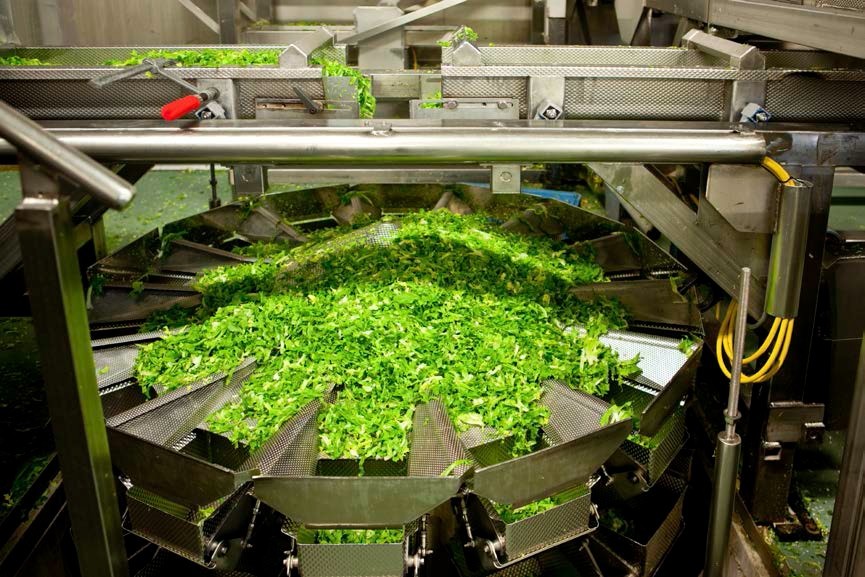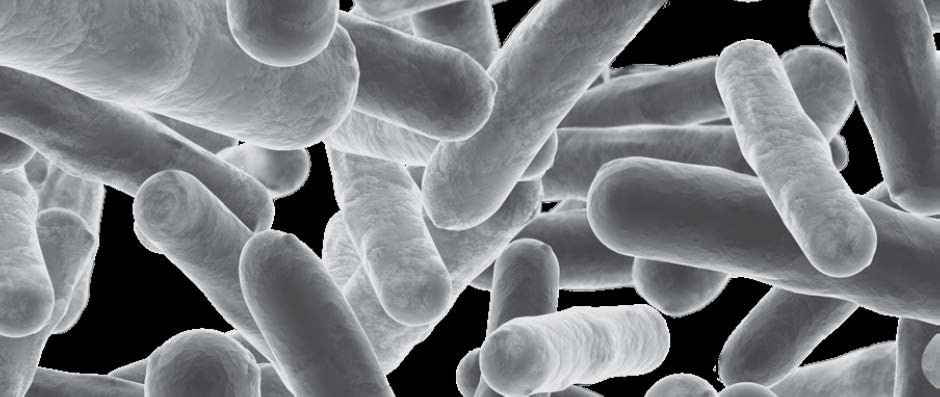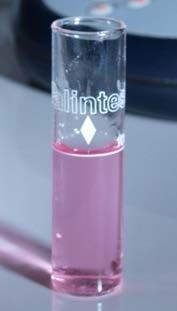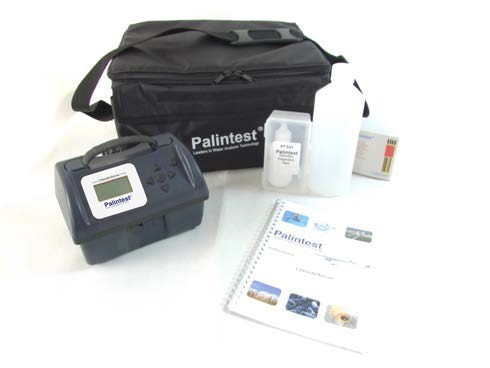
Understanding your disinfectant – the switch from chlorine to chlorine dioxide in the production of fresh produce
Summary
Wash water used in the production of fresh produce always contains a residual disinfectant used to reduce microbial load. There is a growing trend in the UK towards alternative disinfectants such as chlorine dioxide rather than traditional oxidising agents such as chlorine. Careful choice of disinfectant and controlling contact time can lead to an extended shelf life for products generating a significant advantage for manufacturers.
The amount of fresh produce being produced across the globe is increasing due to the national targets for promoting healthy eating and the core role that fresh fruit and vegetables play in achieving those targets.
Increasing demand is twinned with growing constraints on the use of water by manufacturers. Water scarcity has led to a renewed focus by the fresh produce industry on using water more effectively and reviewing their choice of wash water disinfectant. Re-use of water can lead to a build up of organic material in the water potentially resulting in higher levels of disinfection by- products (DBPs).
Zero Liquid Discharge (ZLD) is increasingly an aim of any manufacturer using water in their process. Reuse of water to achieve ZLD by manufacturers is a growing trend within the fresh produce industry which shifts emphasis onto the treatment of water both during the washing process and once the water has been used. Guidelines1 are now being produced to give advice to fresh produce manufacturers which may help control DBPs produced in washing fresh produce.
Testing the wash water used in the washing process is crucial to controlling the microflora that can be found in the final product and understanding the DBP potential crucial in understanding your test result.
As fresh produce is generally grown outdoors it will always contain some microflora, (defined as bacteria and microscopic algae and fungi, especially those living in a particular site or habitat).
A demand for fresh produce regardless of whether it is in season locally leads to issues in sourcing the raw produce. The challenge is caused by the natural microbiology of the growing environment and/or standards of hygiene being significantly different from where the final product is finally consumed.
Hydroponics as a growth medium can circumnavigate some of the issues associated with where the product is grown but this doesn’t resolve the issue of standard of hygiene during harvesting.

Produce washing is the only method of reducing microbial load and no amount of washing will ever completely remove all the pathogens that may be present in the product.
The variability of log reductions is related to the type of produce being washed, the contact time and the disinfectant used.
Typically, when a product or chemical is tested for effectiveness in killing germs, bacteria, virus, etc. the term log reduction is used.
In simple terms, log reduction provides a quantitative measurement describing what percentage of the contaminants which were present when the test began were killed during the test.
As an example, if we start with a microbial load of 1,000,000 cells,
· A log reduction of 3 = 1,000,000 x 0.10 x. 0.10 x 0.10 = 1,000 cells remain
(0.1%).
A 99.9% kill rate
Table 1: CT-values for the deactivation of viruses by various disinfectants
|
Disinfectant |
Units |
Inactivation |
||
|
|
|
2 log |
3 log |
4 log |
|
Chlorine1 |
mg -min/l |
3 |
4 |
6 |
|
Chloramine2 |
mg -min/l |
643 |
1067 |
1491 |
|
ChlorineDioxide3 |
mg -min/l |
4.2 |
12.8 |
25.1 |
|
Ozone |
mg - min/l |
0.5 |
0.8 |
1.0 |
|
UV |
mW – s/cm2 |
21 |
36 |
Not available |
CT values from the AWWA, 1991
1 – values based on temperature of 10oC, pH range of 6 – 9 and a free chlorine residual of 0.2 – 0.5mg/l 2 - values based on temperature of 10oC, pH of 8
3 - values based on temperature of 10oC, pH range of 6 – 9
If adequate disinfectant is present, all dead cells are removed via oxidation and the sanitizer should manage the remaining cells until the next scheduled purge is conducted.
However, if the cells come together to form a biofilm, even with a good sanitizer level, biofilm regrowth is likely to occur quickly. Particularly, if the dead cells have not been removed. Chlorine dioxide is especially effective in tackling biofilms.
Historically, super chlorination of wash water was the predominant method of treating fresh produce and can lead to a reduction in microbial load by 10 to 100 times as long as the contact time is sufficient and the form of chlorine present in the wash water is controlled through regular testing. Agitation and submersion of the produce during washing is an essential part of ensuring the maximum efficacy of the disinfectant.
In recent years there has been a shift to alternative forms of disinfectants due to concerns over the production chlorination by products when super chlorinating.
Although evidence is limited thus far, lessons learned from the drinking water industry (where testing for chlorination by products is a legal requirement) have driven manufacturers to look at alternative disinfectants. This is especially true in the increasing organic fresh produce market and in certain markets where superchlorination of fresh produce is restricted (e.g. Denmark). Chlorine dioxide overcomes some of the disadvantages of using chlorine to disinfect as it not reliant on careful control of the pH of the wash water. As it is volatile it is generally required to be generated on site but the advantages over chlorine are now becoming clear.
On-line controllers are frequently used to monitor the level of disinfectant within wash water. Although effective at monitoring changes in disinfectant level within the wash water, as they are often based on ORP (oxidation- reduction potential) measurement, they lack selectivity meaning they cannot be solely relied upon in ensuring effective disinfection is taking place. A secondary testing method is almost always required in order to calibrate the on-line controller and provide a secondary test method for if the on line controller malfunctions. Spot checks on on-line controller efficacy is usually carried out using a portable method such as a colorimeter.
Some of the reluctance in switching to alternative forms of disinfectant is based around difficulties associated with these secondary methods of water testing. Traditional testing methods involve using portable colorimetric methods for determining the levels of disinfectant in the wash water. However the drawbacks of this method are known to the fresh produce industry.
They include a lack of specificity (e.g. not being able to easily determine free chlorine as opposed to combined chlorine, specifically at superchlorination levels), the complexity of the test and the use of glassware and
chemical reagents which is not appropriate in food production environment.

Developments in portable testing methods such as chronoamperometric disposable sensor methods are changing the way in which portable testing is carried out within the fresh produce industry. Overcoming many of the drawbacks of colorimetric methods, the simplicity and ease of use of the sensors is the key driving force behind their adoption. They are also much more highly selective when multiple oxidants are present in the sample.

As the fresh produce industry grows, there is increased motivation for manufacturers to both consider alternative forms of disinfectant such as chlorine dioxide and to focus on the reuse of wash water. In doing so the industry is adopting best pracice learned from the drinking water industry2.
With regards to water testing, understanding the capability of the test method being used can help manage the production process and food process manufacturers need to build closer ties with water testing equipment manufacturers in order to ensure they have the best methods of analysis for their production line.
This is especially important when considering the potential disinfection by products3 and when there are multiple oxidants present in any one sample.
| Disinfectant | Organic disinfection byproducts | Inorganic disinfection byproducts | Non-halogenic disinfection byproducts |
| Clo/HOCl | Trihalomethanes, halogenic acetic acids, haloacetonnitrils, cholorine hydrates, chloropicrin, chlorophenols, N-chloramines, halofuranones, bromohydrins | Chlorate | Aldehydes, alkannic acids, benzene, carboxylic acids |
| ClO2 | Chlorite | Unknown | |
| NH2Cl | Haloacetonnitrils, cyano chlorine, organic chloramines, chloramino acids, chlorohydrates, haloketons | nitrate, chlorate, hydrazine | aldehydes, ketones |
| Ozone | Bromosform, monobromineacetic acid, dibromine acetic acid, dibrom aceton, cyano bromine | Chlorate, iodate, bromate, hydrogen peroxide, hypobromic acid, epoxy, ozonates | aldehydes, ketones, kettoacids, carboxylic acids |
Tham chiếu/References
1 Guideline no. 70 - Guidelines on the reuse of potable water for food processing operations.Preparedby the Water Reuse Working Party of the Microbiology Panel. Edited by Dr. JohnHolah, 2012
2 EPAGuideline to Alternative Disinfectants, Section 4.8.1, Advantages and Disadvantagesof Chlorine Dioxide Use (1999)
3 Table showing disinfectants and their common disinfection by-products, Palintest